Have you ever wanted to take a dip in the Chitina River? n this article, we are going to dive into the animals that call the river home. We’ll also find out if this river is safe to swim in!
About the Chitina River
The Chinita River is a tributary of the Copper River in Alaska. It’s about 170 miles long with a basin size of 8,400 square miles. This river begins at the Saint Elias Mountains and flows through the Wrangell–St. Elias National Park and Preserve. The water’s source is Chitina Glacier sitting at an elevation of about 3,507 feet. Some major tributaries of this river include the Kiagna River, Tebay River, Kuskulana River, Lakina River, Short River, Nizina River, Tana River, and Quartz Creek.
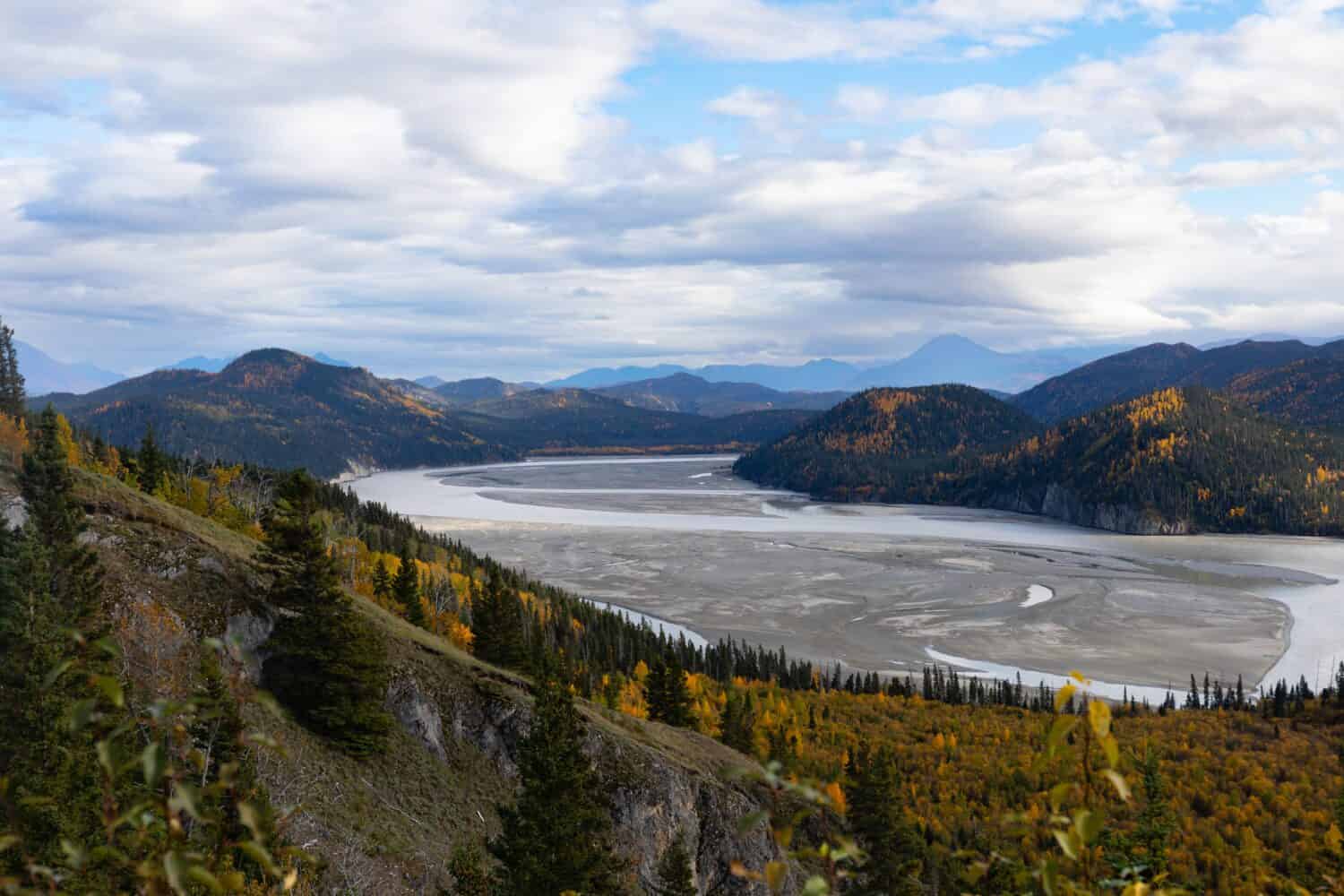
The Chitina River is about 170 miles long.
©Gray Moeller/Shutterstock.com
What’s in the Chitina River?
Many animals live in and around the Chitina River. Here we have some fish species you may encounter while visiting this lovely river in Alaska.
Arctic Grayling
The first animal you may encounter while in the Chitina River is the Arctic grayling. This fish is a member of the salmon family Salmonidae. It’s a freshwater fish native to Arctic Ocean drainages. They are especially common in Canada, Alaska, and Siberia. Interestingly, there is a native population in the upper Missouri River drainage. Arctic grayling fish are grey, yellow, and silver shiny fish that weigh up to 8.4 pounds. Although uncommon, they can also grow up to 30 inches long.
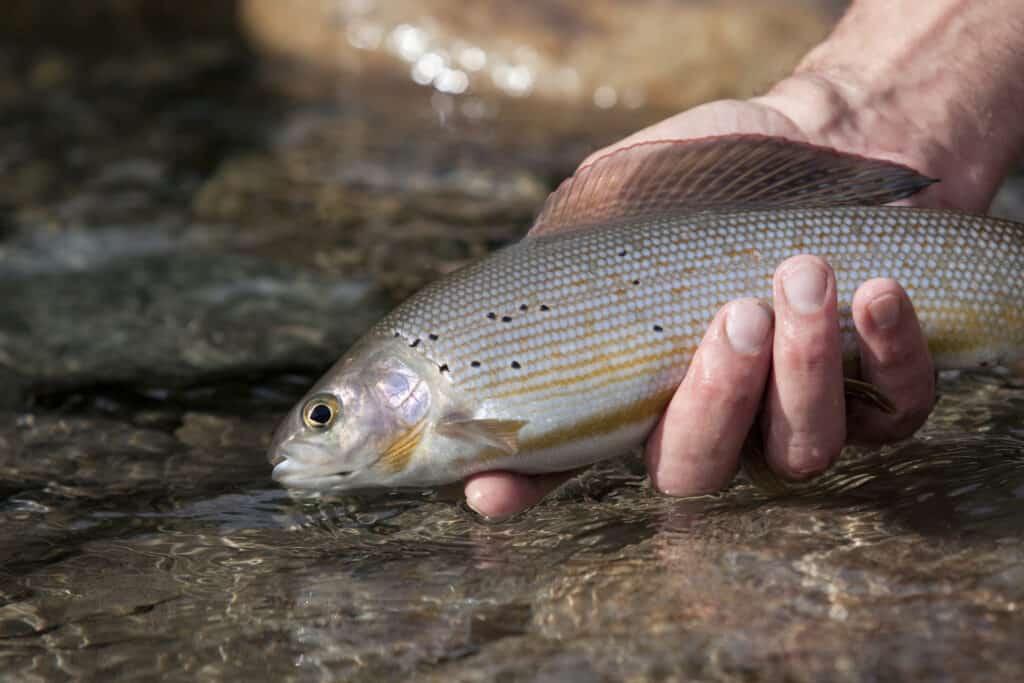
Arctic grayling can reach up to 30 inches long and weigh as much as 8.4 pounds.
©iStock.com/Alaska_icons
Rainbow Trout
Apart from Arctic grayling, you can also find rainbow trout in the Chitina River. Rainbow trout are beautiful sparkling fish with bluish-green backs and silver sides. They also have pink or red sides varying in shades. These fish are about 11 to 18 inches long and weigh about 8 to 11 pounds. The largest rainbow trout ever caught weighed 48 pounds and had an impressive girth of 32 inches. Rainbow trout fishing is very popular.
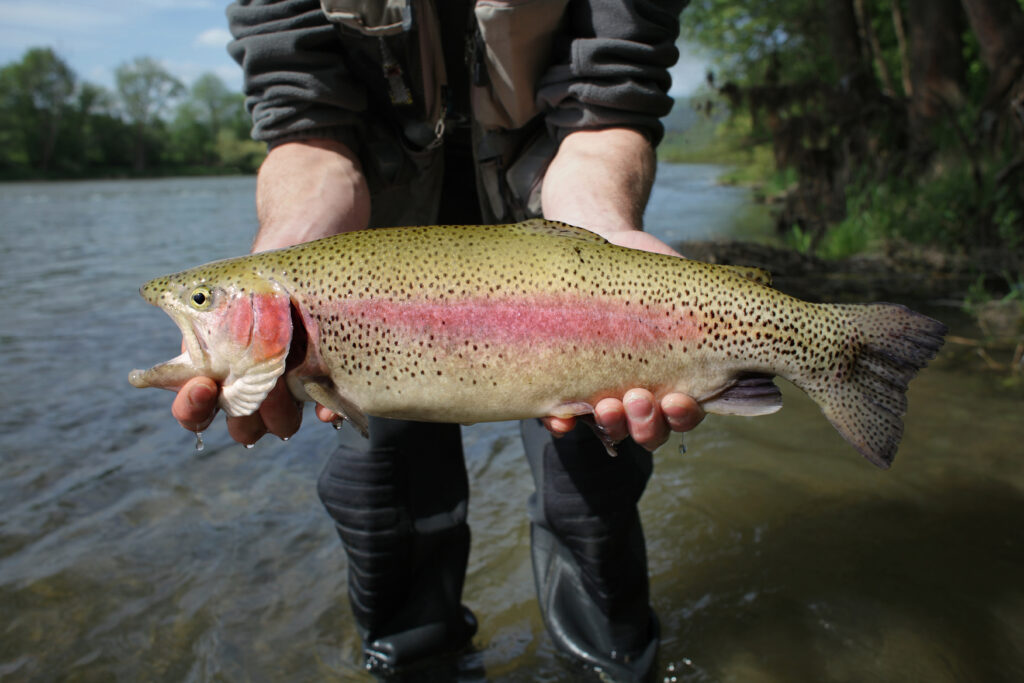
The largest rainbow trout ever caught weighed 48 pounds.
©pictoplay/Shutterstock.com
Lake Trout
Lake trout are also found in the Chitina River and countless other lakes and rivers in Alaska. Lake trout are generally silver and brown with light yellow or cream spots. These fish also have deeply forked tails. Interestingly, lake trout live for about 20 years but can exceed 50 years. Although most lake trout only reach about 8 to 15 pounds, the largest lake trout caught in Alaska was a whopping 47 pounds. You can find these fish in clear lakes and rivers throughout the state.
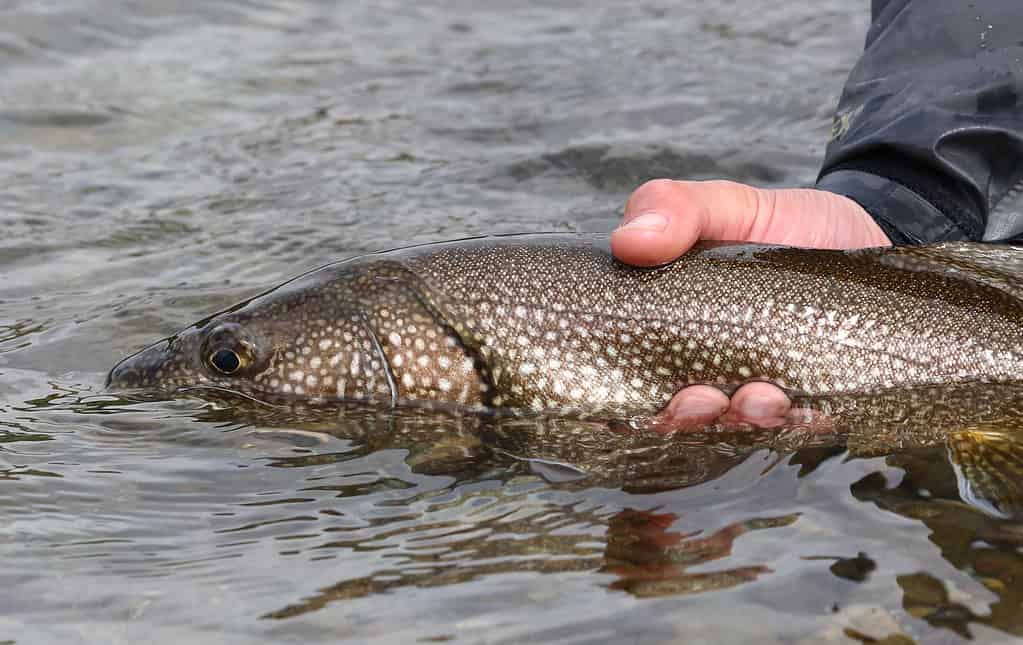
Lake trout are usually brown or olive-gray and feature yellowish or white spots; their underparts are typically white.
©Iryna Harry/Shutterstock.com
Chinook Salmon
The last fish on our list you may encounter while visiting the Chitina River is the Chinook salmon. Alaska is best known for its large salmon populations. Chinook salmon are Pacific salmons with many names including king salmon, chrome hog, Tyee salmon, and Quinnat salmon. You can find these large prized fish in the North Pacific Ocean and rivers from California to Alaska. Not only are they popular catches, but they are also very nutritious.
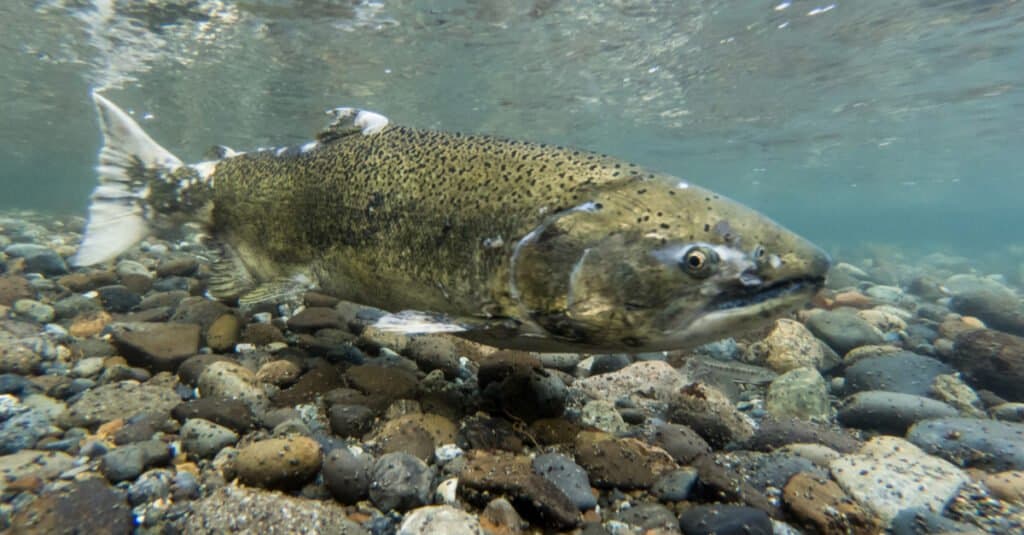
Chinook salmon have many names. They are sometimes also called king salmons.
©Kevin Cass/Shutterstock.com
Can You Swim in the Chitina River?
While you can swim in the Chitina River there are better swimming holes and lakes in the area. Chitina River is glacier-fed, meaning t is very cold! Not only is it cold, but there are areas of the river where currents are strong and can sweep you away. The Chitina River is mainly used for fishing.
Although we don’t recommend swimming in the Chitina River, there are plenty of swimming holes in Wrangell–St. Elias National Park and Preserve, which the river runs through. For example, you can swim in the Long Lake swimming hole. This swimming hole is located on McCarthy Road. This lake is chilly, but it’s not glacially fed so it can be tolerable during the summer. It’s important to note that many residents are alongside the lake, so if you visit, be respectful.
Another swimming hole near the Chitina River is the McCarthy swimming hole. It’s a local favorite where you can relax and swim. However, even during the summer, the water can feel chilly.
Even though the Chitina River is cold and can be rough, you can still explore this beautiful river. Camping, hiking, birding, and kayaking are popular river activities you can enjoy. In some camping areas within the national park are bear-proof boxes to store food.
The photo featured at the top of this post is © inEthos Design/Shutterstock.com
Thank you for reading! Have some feedback for us? Contact the AZ Animals editorial team.






